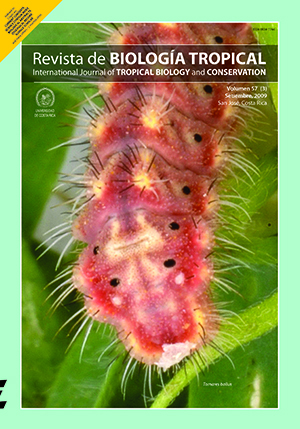Abstract
The feeding activity of three herbivorous fishes (Sparisoma viride, Scarus isertiand Acanthurus coeruleus) and its impact on two coral reefs were studied during the dry (February) and rainy (August) seasons of 2006 in Cuba. One of the reef stations is at the “Acuario” dive point in the Guanahacabibes National Park, and is relatively pristine. The second one is located at the north coast of Havana City facing the Instituto de oceanología (IdO) and is subject to pollution and fishing pressures. Herbivore fish composition was analized, and foraging intensity was measured for all Acanthurid and Scarid species, by counting fish bites in 1 m2 during five minute intervals (25 replicates). Concurrently, species foraging intensity was measured for juvenile, intermediate, and adult phases, counting fish bites during 10 minutes intervals (10 replicates). Algal consumption rate was estimated using a coefficent of consumed biomass per bite, for each size class. The algal cover was sampled at 20 m linear transects with four replicates at each site. Food items were assessed sampling algae at the observed bitten substrates. Compared to Acuario, herbivores in IdO showed lower species richness and higher density of small size fishes, but large-sized parrotfish was almost absent due to intense fishing. The highest bite rate was observed for the smallest fish size, but net consumption rate was three times greater for medium and great size fishes, which were more abundant in the protected area. Algal cover was lower in Acuario, while in IdO it was very high, and coral cover was very low. In both locations epiphytic algae were the preferred food. These results support generalizations referring to the importance of great size herbivores fishes in controlling excesive algal proliferation on coral reefs.
##plugins.facebook.comentarios##

This work is licensed under a Creative Commons Attribution 4.0 International License.
Copyright (c) 2009 Revista de Biología Tropical






